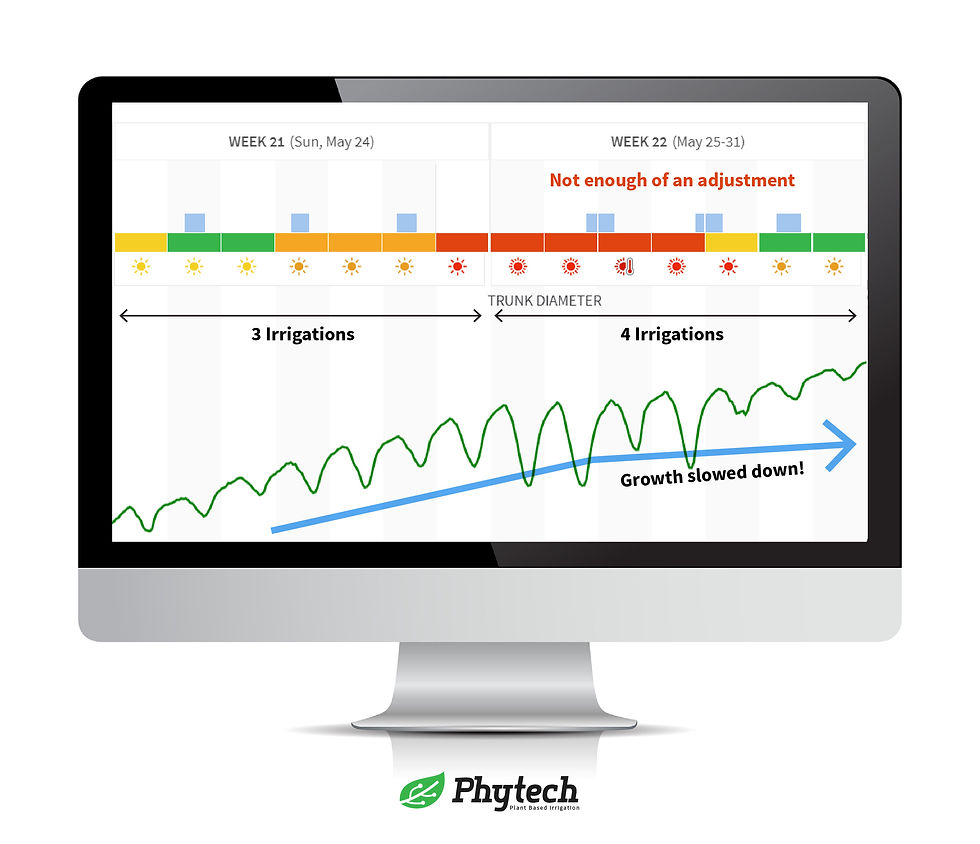AlmondBeat #7: What did the heat teach us?
- Phytech Team

- Jun 8, 2020
- 2 min read
Every challenge is a chance for growth and learning. Last week's heat wave provides us an excellent opportunity to dive deep into each block's behavior and assess our irrigation strategies accordingly. AlmondBeat report #7. Here we go.
“An ounce of prevention is worth a pound of cure.” (Benjamin Franklin) As we already stated, heat is sometimes unavoidable, but recovery is certainly in our hands. Growers who have adapted their irrigation plans in more stress-prone blocks (remember those thirsty pollinators from our first AlmondBeat report?) were supporting their trees' growth and recovery. As we all know, at this stage of the season too much stress and low growth have negative effect on yields.
A better understanding of each block The heat wave also provides the grower with an opportunity to better understand the specific water demands and mechanics of the ranches. A litmus test for trees' status and special conditions in each block. By observing closely how trees in different blocks reacted to the heat, growers are able to fine-tune their irrigation and optimize water delivery. This means saving a considerable amount of water on less-stressed blocks and supplying the right amount of water for high demanding trees in other blocks. From data to action The needed data for drawing insights and taking action is simply laid out by those key indicators:
Plant status
Growth graph/MDS graph
Phytech's recommendation (the black reference line)
These indicators give growers unprecedented access to their trees' real condition and needs, helping them to design a tailor-made, optimized irrigation plan. Here below are three examples of growers changing their irrigation tactics and what were the implications. That's it for now. Keep on learning and stay tuned for our next AlmondBeat report






Comments